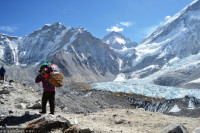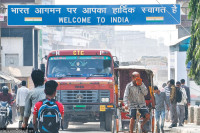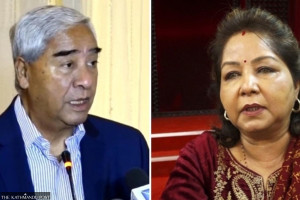Money
Cylinders failing weight standards to be seized
The Nepal Bureau of Standards and Metrology (NBSM) is preparing to strictly enforce weight standards for liquefied petroleum gas (LPG) cylinders in a bid to ensure consumer safety.
The normal weight of a gas cylinder lies between 14-17 kg which is stamped on the outside. Any cylinder with a difference in weight of more than 5 percent from that printed on the cylinder will be confiscated forthwith.
The market is reported to be rife with unsafe gas cylinders. According to gas dealers, consumer rights activists and other concerned stakeholders, more than 30 percent of the LPG cylinders in circulation are at high risk of blowing up.
According to the NBSM, a cylinder can be over the normal weight if it contains sludge. “If the weight is more than 2 percent of the normal weight, it could create a risk to users, so sellers have to be careful about cleaning the cylinder in time,” said NBSM Director General Bishwa Babu Pudasaini.
Once the standard is implemented, bottlers and gas depots will be required to check their cylinders for weight and possible leakage before dispatching them to customers. “All the sellers will have to keep a weighing machine and leakage detecting device at their outlets,” said Pudasaini.
According to the NBSM, the standard could help protect people from possible risks that could arise from the use of old cylinders.
“We have started consultation with the stakeholders on the draft regulation and we have planned to submit it to the Ministry of Industry within the next two weeks,” said Pudasaini. He added that the standard, once endorsed and published in the Nepal Gazette, will be binding on all the LPG sellers.
The standard, according to the NBSM, will particularly address the physical appearance, leakage and weight of LPG cylinders. Pudasaini said the physical appearance of LPG cylinders should be visually acceptable.
“The cylinders intended for sale should not have faded paint, dents and scratches or rust,” he said. “Similarly, the information and the brand logo stamped on the cylinder’s surface should be easily readable.”
To ensure the quality of LPG cylinders, bottling companies will have to do a hydrostatic test of the cylinders for the first time after 10 years from the date of use. The companies will have to carry out similar tests every five years subsequently.
Hydrostatic testing is a process of checking the ability of a cylinder to withstand the pressure inside it. “It checks for any leakage on the cylinder surfaces,” said Pudasaini. According to him, the cylinder should be able to withstand a pressure of 25 megapascal as an assurance of its quality.
Although all the bottlers have to carry out hydrostatic testing of their cylinders, many of them have been defying the NBSM’s directive.
Similarly, bottlers are required to use cylinders marked with the company’s bung code. “The bung code is a unique coding that is marked near the valve of the gas cylinder. It separates the cylinder of a particular bottling company from that of others,” said Pudasaini, adding that the provision was designed to prevent gas bottlers from switching cylinders.
About four years ago, after a number of gas companies were found tampering with the cylinders of other companies to earn extra profits, the NBSM had enforced the bung code system for gas bottlers. However, it was not being effectively implemented in the absence of regulation.
Meanwhile, the NBSM on Monday wrote to the Nepal LP Gas Industry Association asking it to ensure that its members had weighing machines at their depots. According to Pudasaini, they have asked the sellers to keep weighing devices with a capacity of 50 kg. “We have aimed to enforce the provision within a week,” Pudasaini said.




 18.56°C Kathmandu
18.56°C Kathmandu













